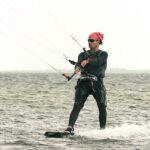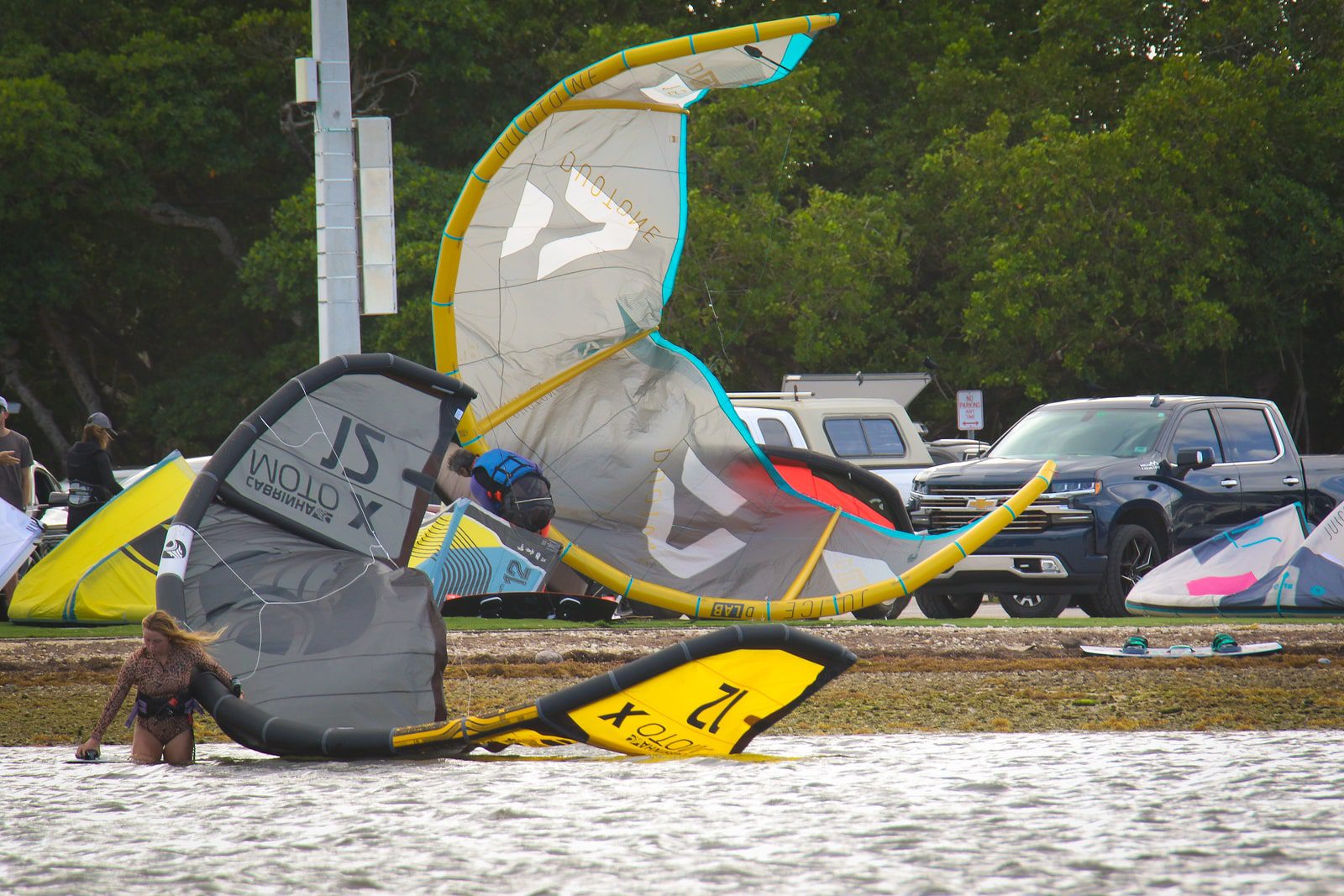
Why Safety First is the Most Important Aspect of Kitesurfing?
Kitesurfing is an exhilarating and challenging water sport that involves riding on a board while being propelled by a kite. While kitesurfing can be fun, it also comes with some risks. To ensure an enjoyable and safe experience, it is crucial to prioritize safety first. This article will discuss why safety is the most critical aspect of kitesurfing and provide tips for staying safe.
Table of Contents
- Introduction.
- Understanding the Risks of Kitesurfing.
- The Importance of Proper Training.
- Choosing the Right Equipment.
- Understanding Weather and Water Conditions.
- Essential Safety Gear for Kitesurfing.
- Kitesurfing Etiquette.
- Tips for Safe Kitesurfing.
- Common Mistakes to Avoid While Kitesurfing.
- What to Do in Case of an Emergency.
- Conclusion.
Understanding the Risks of Kitesurfing.
Kitesurfing is an extreme sport that involves flying a large kite in high winds while riding a board. As with any extreme sport, kitesurfing comes with some inherent risks. Some of the risks associated with kitesurfing include the following:
- Injury from crashing into the water or other objects.
- Getting tangled in the kite lines.
- Being dragged or pulled by the kite.
- Hypothermia from exposure to cold water and Wind.
- Sunburn and dehydration from prolonged exposure to the sun.
- Collisions with other kitesurfers or watercraft.
The Importance of Proper Training.
One of the most critical aspects of kitesurfing safety is proper training. Kitesurfing requires unique skills, including kite handling, board control, and water navigation. Without adequate training, kitesurfing can be dangerous and potentially life-threatening.
To ensure safe kitesurfing, you must learn from a qualified instructor who can teach you the proper techniques and safety protocols. A qualified instructor will help you understand the risks associated with kitesurfing and how to manage them.
Choosing the Right Equipment.
Choosing the right equipment is another crucial aspect of kitesurfing safety. Your selected equipment will depend on your skill level, body weight, Wind and water conditions, and personal preferences. Some of the equipment you will need for kitesurfing includes:
- Kite.
- Control bar and lines.
- Harness.
- Board.
- Wetsuit.
- Life jacket.
- Helmet.
- Booties.
- Sunglasses or goggles.
Choosing high-quality equipment appropriate for your skill level and the conditions you will be kitesurfing in is essential. Using faulty or inadequate equipment can lead to accidents and injuries.
Understanding Weather and Water Conditions.
Understanding weather and water conditions is another critical aspect of kitesurfing safety. Wind, waves, and currents can all affect your ability to kitesurf safely. It is essential to check the weather forecast and water conditions before heading out on the water.
It would help if you only kitesurfed in conditions appropriate for your skill level. Avoid kitesurfing in strong winds, choppy water, or stormy weather. Always be aware of changing weather and water conditions, and be prepared to adjust your plans accordingly.
Essential Safety Gear for Kitesurfing.
In addition to the equipment listed above, several pieces of safety gear are essential for kitesurfing. These include:
- Life jacket: A life jacket is vital to staying afloat in the water in an emergency.
- Helmet: A helmet can protect your head from injury in case.
- Of a collision or fall.
- Wetsuit: A wetsuit can protect you from hypothermia and keep you warm in cold water.
- Booties: Booties can protect your feet from sharp objects and keep them warm.
- Safety knife: A safety knife can cut kite lines in an emergency.
- Whistle: A whistle can be used to signal for help in case of an emergency.
Kitesurfing Etiquette.
Kitesurfing etiquette is essential for maintaining a safe and enjoyable experience for everyone on the water. Some of the critical rules of kitesurfing etiquette include the following:
- Give way to the right: When two kitesurfers approach each other, the person on the right has the right of way.
- Keep a safe distance: Always maintain a safe distance from other kitesurfers and watercraft.
- Avoid jumping near others: Avoid jumping near other kitesurfers or watercraft, as this can be dangerous and lead to collisions.
- Respect other beach users: Respect other beach users and avoid kitesurfing in crowded areas with swimmers or sunbathers.
Tips for Safe Kitesurfing.
To ensure safe kitesurfing, here are some tips to keep in mind:
- Always check the weather and water conditions before heading out on the water.
- Never kitesurf alone. Always kitesurf with a friend or in a group.
- Wear the appropriate safety gear, including a life jacket and helmet.
- Practice your kite control and board skills in a safe and controlled environment.
- Start with small jumps and progress to bigger ones as you become more experienced.
- Avoid overpowered conditions, which can be dangerous and lead to accidents.
- Stay clear of other kitesurfers and watercraft.
- Learn how to self-rescue in case of an emergency.
Common Mistakes to Avoid While Kitesurfing.
To stay safe while kitesurfing, here are some common mistakes to avoid:
- Overestimating your skill level: Be honest with yourself about your skill level and only attempt maneuvers that you are confident in.
- Ignoring weather and water conditions: Always check the weather and water conditions before heading out on the water and adjust your plans accordingly.
- Using faulty equipment: Always use high-quality, well-maintained equipment.
- Kiting in problematic areas: Avoid kitesurfing in crowded areas or areas that are reserved for swimmers or other watercraft.
- Need to learn proper kite control: Proper kite control is essential for safe kitesurfing. Make sure to learn good kite control techniques from a qualified instructor.
What to Do in Case of an Emergency?
Despite your best efforts to stay safe, accidents can still happen. In case of an emergency, here are some steps you can take to stay safe:
- Try to remain calm and avoid panicking.
- Use your safety gear, such as a life jacket or safety knife, if necessary.
- Signal for help using a whistle or other means.
- If you become separated from your kite, try to swim to shore as quickly as possible.
- Seek medical attention if necessary.
Conclusion.
Kitesurfing is an exciting and challenging sport that can be enjoyed safely by following proper safety protocols. Prioritizing safety first is the most critical aspect of kitesurfing. By understanding the risks associated with kitesurfing, choosing the right equipment, and following proper safety guidelines, you can enjoy a fun and safe kitesurfing experience.
Author
Latest entries
 WatersportsMay 10, 2023Qatar GKA Freestyle Kite World Cup, Fuwairit Kite Beach, Qatar: 31 January – 04 February – 2023
WatersportsMay 10, 2023Qatar GKA Freestyle Kite World Cup, Fuwairit Kite Beach, Qatar: 31 January – 04 February – 2023 WatersportsMarch 30, 2023Seven Navigation Tips That All Kite Surfers Should Know.
WatersportsMarch 30, 2023Seven Navigation Tips That All Kite Surfers Should Know. WatersportsMarch 30, 2023Why Safety First is the Most Important Aspect of Kitesurfing.
WatersportsMarch 30, 2023Why Safety First is the Most Important Aspect of Kitesurfing. WatersportsMarch 30, 2023Tips to Improve Your Body Drag Skills in Kitesurfing.
WatersportsMarch 30, 2023Tips to Improve Your Body Drag Skills in Kitesurfing.
